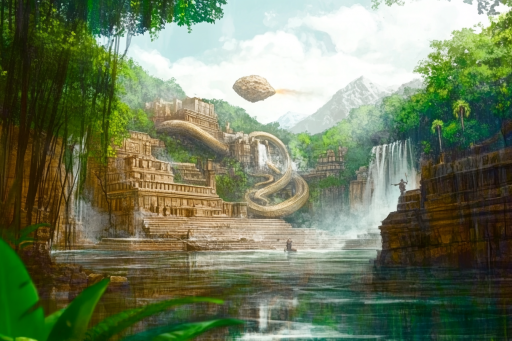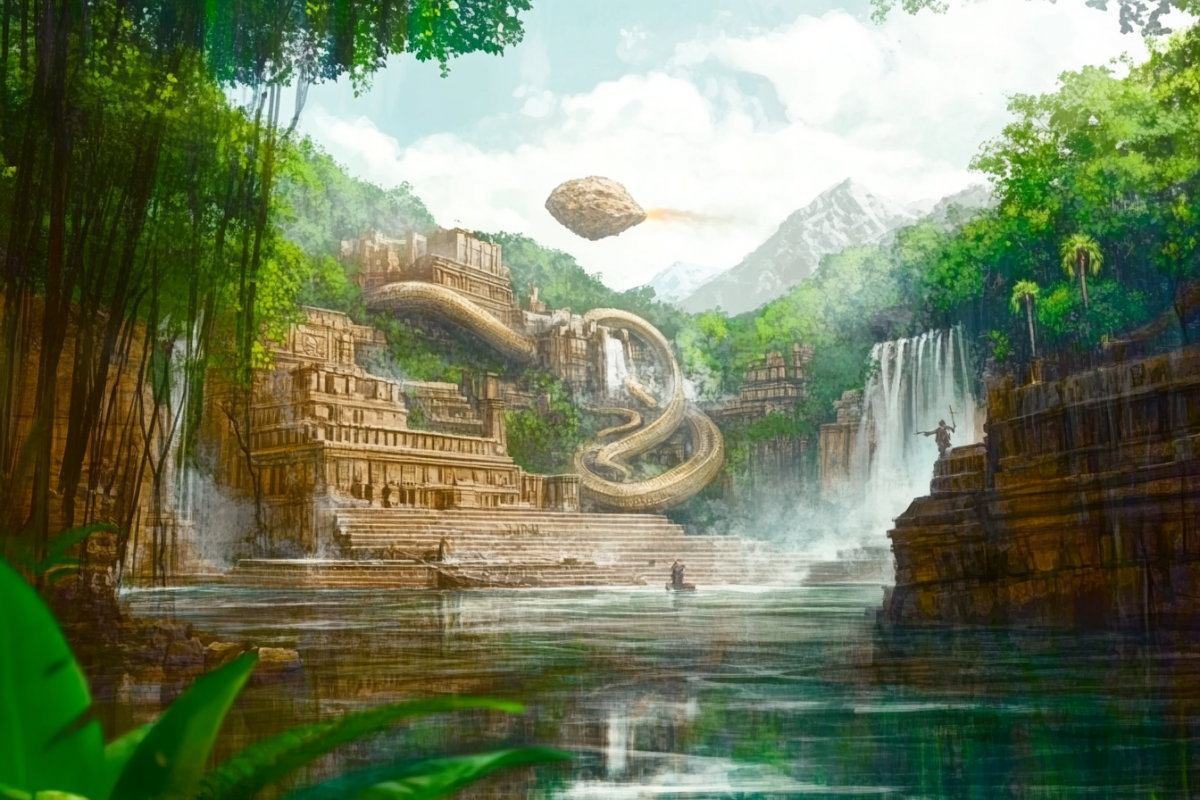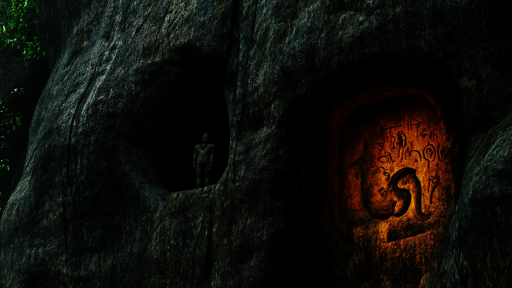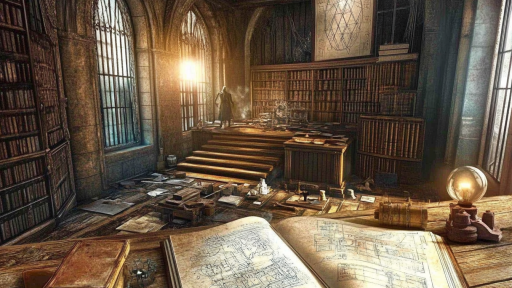
Ancient myths were often dismissed as pure fiction, but what if some of them were based on real events? Across civilizations, stories of great floods, lost cities, and supernatural beings have eerie connections to historical discoveries and scientific theories. Could these legends be distorted memories of the past, passed down through generations? The truth may be hidden between myth and reality, waiting to be uncovered.
The Great Flood – A Memory of Ancient Catastrophe?

Nearly every ancient culture has a tale of a catastrophic flood that wiped out civilizations—the biblical Noah’s Ark, the Sumerian Epic of Gilgamesh, and Hindu texts describing a great deluge. Scientists now believe these stories may be linked to real events, such as the sudden flooding of the Black Sea around 5600 BCE or the rapid melting of glaciers at the end of the Ice Age. These massive floods could have inspired the myths that shaped human history.
Atlantis – A Lost City Beneath the Waves?

Plato described Atlantis as a highly advanced civilization that sank into the sea in a single day. While many dismiss it as legend, some believe it could be based on real places, such as the Minoan civilization on Crete, which was devastated by a volcanic eruption. Recent discoveries of submerged ruins and ancient maps suggest that lost cities beneath the ocean may hold the key to Atlantis’ true origins.
The Trojan War – A Legendary Battle That Was Real?

For centuries, the Trojan War was thought to be a myth—until archaeologist Heinrich Schliemann uncovered the ruins of Troy in the 19th century. Ancient texts describe a great war fought over a beautiful queen, and while the details of gods and wooden horses may be exaggerated, evidence suggests a real conflict did take place in the region. The blurred line between history and legend makes the story of Troy one of the most fascinating discoveries of all time.
The Curse of the Pharaohs – A Deadly Reality?

Legends tell of an ancient Egyptian curse that dooms anyone who disturbs a pharaoh’s tomb. While many dismiss this as superstition, the sudden deaths of those who opened King Tutankhamun’s tomb fueled belief in the curse. Some scientists suggest that deadly mold, ancient bacteria, or even deliberate poisons could explain the mysterious deaths. Whether supernatural or scientific, the legend continues to haunt archaeology.
The Amazonian City of Gold – Was El Dorado Ever Real?

Spanish conquistadors spoke of a golden city hidden deep in the Amazon rainforest, leading to centuries of failed expeditions. While no city made of gold has ever been found, satellite technology has revealed evidence of massive ancient civilizations buried beneath the jungle. Researchers believe the myth of El Dorado may have been inspired by real lost settlements, abandoned after European diseases decimated the indigenous populations.
The Minotaur’s Labyrinth – Inspired by an Ancient Palace?

The Greek myth of the Minotaur tells of a monstrous half-man, half-bull creature trapped in a labyrinth beneath King Minos’ palace. Archaeological excavations on Crete uncovered the ruins of the Minoan palace of Knossos, which featured a complex network of corridors and rooms. Historians believe the myth may have originated from real events, possibly distorted memories of human sacrifices performed in the palace’s underground chambers.
The Fire from the Sky – Was Sodom and Gomorrah Destroyed by a Cosmic Impact?

Biblical and ancient texts describe the destruction of Sodom and Gomorrah as a divine punishment by fire and brimstone. Scientists have discovered evidence of a possible meteor or comet explosion over the region that could explain the city’s sudden demise. A Tunguska-like airburst could have caused a massive firestorm, leaving behind a catastrophe that later became mythologized as divine retribution.
The Thunderbird and the Pterodactyl – Did Ancient People See Dinosaurs?

Native American legends speak of massive, winged creatures called Thunderbirds that ruled the skies, striking the land with lightning. Some researchers believe these stories could be based on real encounters with giant prehistoric birds like the Argentavis, or fossilized remains of pterosaurs discovered by ancient tribes. Could the memory of extinct creatures have survived through oral tradition?
The Fountain of Youth – A Real Quest for Longevity?

Spanish explorer Juan Ponce de León allegedly sought the Fountain of Youth, a mythical spring that granted eternal life. While no such fountain has been found, modern science suggests ancient cultures may have linked natural mineral springs with healing properties. Some thermal springs, rich in minerals and rare elements, have been known to improve health—perhaps giving rise to the legend of immortality.
The Beasts of the Deep – Were Sea Monsters Real?

For centuries, sailors feared sea monsters like the Kraken and Leviathan, describing massive tentacled beasts that dragged ships into the depths. Modern discoveries of giant squids and colossal deep-sea creatures suggest that these myths may have been based on real encounters. With much of the ocean still unexplored, who knows what other legendary beasts may still lurk in the abyss?
The Great Serpent – Did Dragons Exist?

Dragon myths appear in nearly every culture, from China to Europe to the Americas. Some historians believe these stories may have been inspired by fossilized dinosaur bones, which ancient people misinterpreted as remains of giant serpents. Others suggest that encounters with massive reptiles like crocodiles and monitor lizards influenced the legend. Could dragons have been real, in some form?
What If Myths Are More Than Just Stories?

Legends passed down for generations may hold more truth than we ever imagined. As archaeology and science continue to uncover lost civilizations, ancient disasters, and forgotten creatures, the line between myth and history becomes increasingly blurred. If these stories were rooted in real events, how many more forgotten truths are still waiting to be discovered? Perhaps the past is still whispering its secrets to us.





